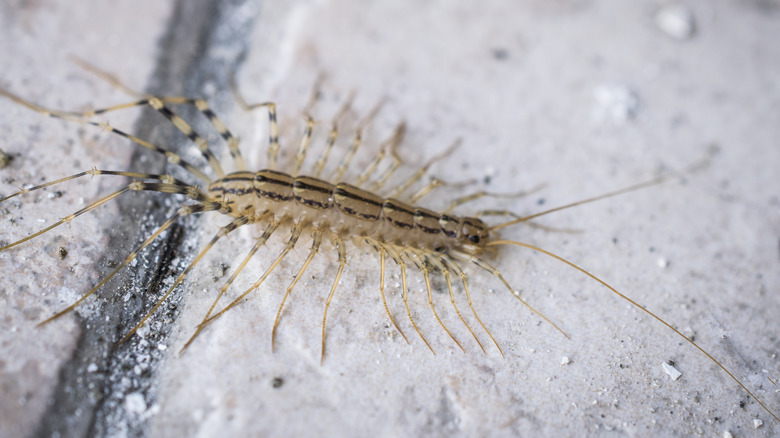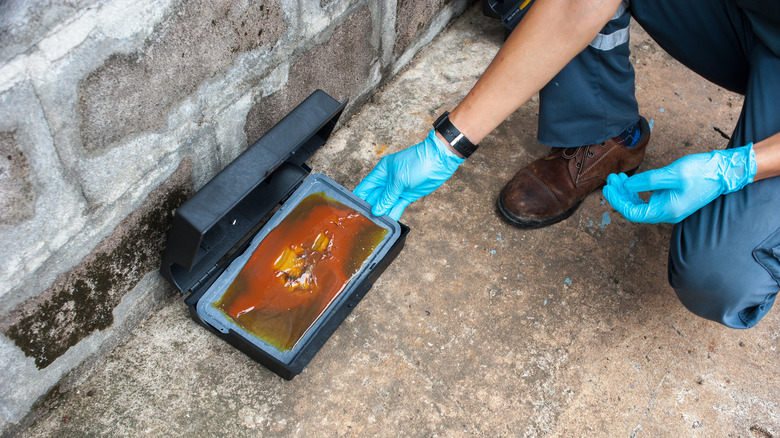Keep Those Creepy Crawlies Out Of Your Garage With This Mouse Trap Hack
We may receive a commission on purchases made from links.
Garages are a common hiding place for all sorts of insects and spiders, as they can sneak through small cracks in the side of the door or fly in when the door is open. Luckily, there is an easy way to trap these critters before they make their way from your garage to your house. By placing glue traps for mice on the inside of your garage by the sides of the door, you can catch bugs that are getting inside and keep insects out of your house. While these types of traps work well for insects, they can be harmful to animals, including the ones they're intended to catch.
When a rodent or small animal crawls over the glue trap, it will get stuck, but it won't die right away, making this pest control method extremely inhumane. These traps may also harm pets, according to The Humane Society of the United States, so it's best to use caution when implementing these traps for insects. Alternatively, you could try sticky traps that are designed for bugs rather than mice, as they do not have as strong of an adhesive.
How to use glue traps against insects in your garage
To start this pest control hack, you'll need to purchase glue traps for mice, which can be found at many hardware and grocery stores. At The Home Depot, you can find a pack of four glue traps for $5, or Amazon has a 10-pack of Catchmaster glue traps for $19. Because these traps are designed for small animals, they are stickier and studier than traps made just for insects; however, if you only get small bugs entering your garage and are afraid of the risk of glue traps, these might be a better option (six cricket glue boards are $12 on Amazon).
Place the boards in a line on the sides of your garage door so that the end of one is touching the next. With this method, bugs that are able to crawl over the first sticky pad will hopefully get stuck on the next one. You could also place the traps along the walls of your garage or wherever you find the most insects. Make sure that you only place traps inside your garage to prevent wild animals from getting stuck, and keep your pets and children away from the area. When the traps become full or lose their adhesive properties, replace them. For those with persistent issues with insects coming into their garage, this should help to curb incoming populations but likely won't control an infestation.
Downsides of mouse glue traps
While glue or sticky traps will catch most insects, a few might still make it past your defenses. There's no guarantee that every bug entering your garage will step on the traps, and flying insects likely won't be affected by adhesive pads on the floor at all. There are, however, hanging sticky traps designed for bugs that fly that could be hung throughout your garage.
Glue traps are widely used and available, but many times, they cause small animals to suffer for extended periods of time. Mice and rats will sometimes attempt to chew off their legs in order to escape, and they often die of starvation over days, resulting in a slow death. Though you may only intend to use the traps for insects, there is still a chance that a rat, mouse, lizard, or other small animal could get stuck, and they might still be alive when you find them. Additionally, the Humane Society of the United States explains that cats and other pets may need medical attention or even surgery if they get a trap stuck to their fur or skin. While these sticky traps are great for pests lurking in your garage, you'll need to be sure you're using them safely.

